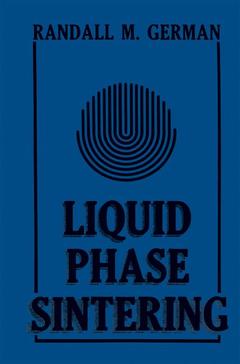Description
Liquid Phase Sintering, Softcover reprint of the original 1st ed. 1985
Author: German R.M.
Language: EnglishApproximative price 158.24 €
In Print (Delivery period: 15 days).
Add to cart
Publication date: 01-2014
244 p. · 15.5x23.5 cm · Paperback
244 p. · 15.5x23.5 cm · Paperback
Description
/li>
In the past few years there has been rapid growth in the activities involving particulate materials because of recognized advantages in manufacturing. This growth is attributed to several factors; i) an increased concern over energy utilization, ii) a desire to better control microstructure in engineermg materials, iii) the need for 1mproved material economy, iv) societal and economic pressures for higher productivity and quality, v) requirements for unique property combinations for high performance applica tions, and vi) a desire for net shape forming. Accordingly, liquid phase sintering has received increased attention as part of the growth in particulate materials processing. As a consequence, the commercial applications for liquid phase sintering are expanding rapidly. This active and expanding interest is not well served by available texts. For this reason I felt it was appropriate to write this book on liquid phase sintering. The technology of liquid phase sintering IS quite old and has been in use in the ceramics industry for many centuries. However, the general perception among materials and manufacturing engineers is that liquid phase sintering is still a novel technique. I believe the diverse technological appli cations outlined in this book will dispel I such impressions. Liquid phase. sintering has great value in fabricating several unique materials to near net shapes and will continue to expand in applications as the fundamental attrib utes are better appreciated. I am personally involved with several uses for liquid phase sintering.
© 2024 LAVOISIER S.A.S.
These books may interest you

Liquid-Phase Sintering 52.74 €




